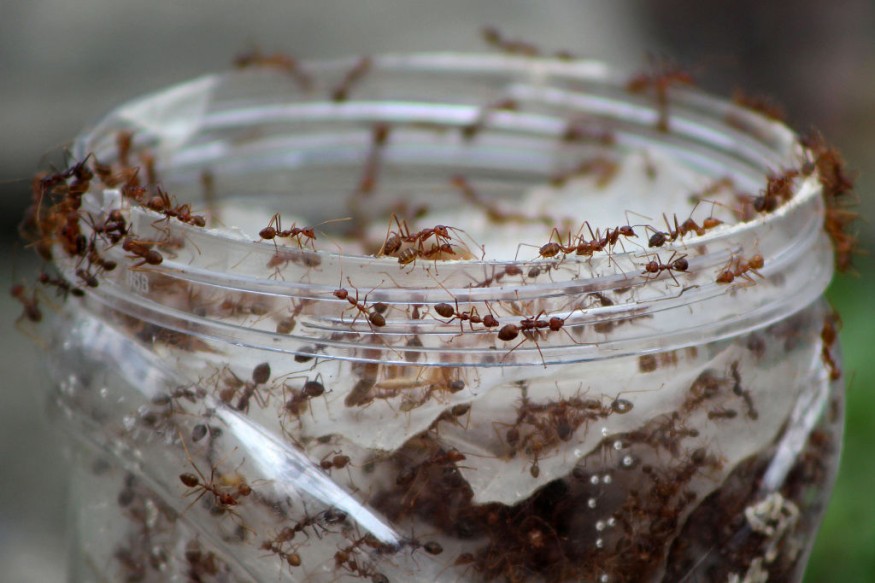Ants prefer a nutrient-rich "milk" that pours out from their young rather than becoming drunk on beer. Every colony member, from the newest hatchlings to adults, participates in this social gathering.
This liquid is secreted in huge quantities by ant pupae during a certain stage of development. It appears to be a mixture of molting fluids, which also contain the enzymes that dissolve the previous cuticle of the pupa as well as its degraded byproducts.

Ants Drowning in Milk
New York Times reported that a researcher at Rockefeller University in New York named Orli Snir struggled to maintain her ants' health. She had removed pupae from a clonal raider ant colony where younger larvae and older adult ants were cooing over the sesame seed-sized young, which resembled puffed rice cereal. Each pupa was isolated and placed in a tiny, dry test tube. They perished in the water each time.
Each pupa was spewing so much watery, golden fluid that it was having trouble breathing. However, they survived after Dr. Snir removed the fluid using a capillary tube. Her casual remark set off a series of odd investigations that ultimately led to the absurd but inevitable discovery that the mystery ant goo behaves a lot like milk.
Additionally, numerous ant species consume this milk. According to a study led by Dr. Snir and released on Wednesday in the journal Nature, perhaps all ants do this. It includes ants, in addition to other surprising animals like pigeons, spiders, and beetles that ingest milk-like fluids from one another. Additionally, it unites generations of ants and the wider ant society, just like milk unites mammals.
ALSO READ : The Colosseum Ancient Drainage System Unveils Sausage Dogs Perished in Savage Bear Fights
Dr. Snir initially saw the peculiar secretions and then looked through the scientific literature; it appeared that her ant pupae were exuding something largely undiscovered by science. She told her co-author Daniel Kronauer, who is in charge of the Rockefeller University research team studying ant evolution, what she had discovered.
When Snir suggested an odd experiment, Kronauer did concur. She decided to observe the pupae in isolation rather than attempting to make sense of the combined activity inside the colony, where pupae and larvae are continuously being groomed, transferred, or even heaped together. It took some time for her to discover the ideal temperature and humidity level to keep them alive. The pupae then started creating a liquid in large quantities, which was a strange development.
National Geographic said Snir injected blue food dye into the fluid-emitting aperture and returned the bluish pupae to the colony to verify things. She soon discovered adult ants suckling the liquid from the pupae, as evidenced by the blue tint spreading throughout their intestines. They frequently laid new larvae on the pupae, which consumed the fluid; these larvae also turned blue.
A Social Glue
Since ants are so interdependent on one another within their colony, they are frequently compared to an organism that functions as a whole, with each social class playing a specialized duty similar to a particular type of tissue or organ.
Although it is unknown how this pupa fluid affects ant social organization, experts are eager to learn more about it.
"The way ants use this fluid creates a dependency between different developmental stages," says Kronauer (per Science Alert). "It just shows to what extent ant colonies operate as an integrated unit."
Although ants have been observed enjoying unusual excretions in the past, this is a startling new discovery, given that this species has been extensively studied for more than a century.
Their findings were made public in Nature.
RELATED ARTICLE: Scientists Use Insects' Sex Hormones to Getaway From Pesticides
Check out more news and information on Animals in Science Times.











